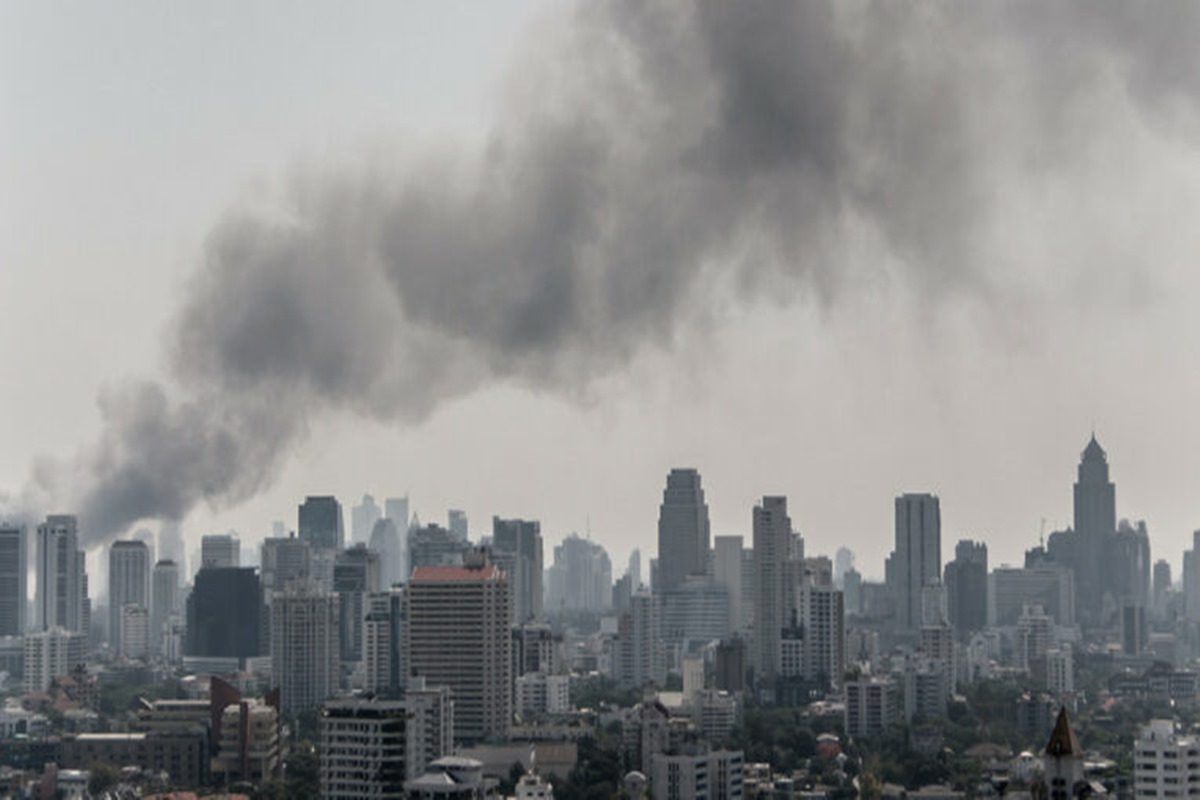Local residents are breathing toxic gases across this industrial city that has surpassed the degree of pollution of the national capital for the second consecutive day and topped the list of hazardous cities in the country, as the pollution index chart prepared by the Central Pollution Control Board reflects.
Bidhannagar locality in Durgapur town recorded the highest AQI (air quality index) level at 423 yesterday at a time when AQI at Shadipur point – the worst-hit area in Delhi was at 394 and AQI of Chandigarh, another desperately gasping city had dropped down to 269. Today, when Bidhannagar’s AQI however dropped slightly to 404, Delhi recorded 324. Durgapur’s neighbouring towns, Raniganj and Asansol, at 2.30 pm today recorded AQI levels at 324 & 380.
Advertisement
“Yes, it’s a fact that the ambient air quality of Durgapur has deteriorated dangerously and we’ve taken serious cognizance about it,” said Arup De, environmental engineer of the West Bengal Pollution Control Board’s regional headquarters here this afternoon. He said: “We’ve beefed up surveillance furthermore and actions against three more polluting iron & steel factories have been geared up today.” The WBPCB has already taken harsh penal measures against two polluting induction furnace units close to Bidhannagar by suspending their operations. Besides, 15 water cannons have been pressed into operation for sprinkling since yesterday, which would soon be elevated to 35, Dey said.
The Paschimbanga Bijnan Mancha’s district committee, considering the soaring air pollution, staged a demonstration in front of the WBPCB office here today.
Yesterday, PM10 (particulate matter up to 10 micrometer) per meter-cube of ambient air registered the highest ever density near Panagarh at 453 micrograms against 423 AQI level that subsequently dropped to 422.61 micrograms today. PM10 emanates during unchecked Iron and steel production, mining and cement production in Durgapur industrial zone. Safe PM10 level of ambient air, prescribed by WHO, is 20 micrograms per cubic metre. PM2.5, another pollutant particle, was 242 micrograms per meter-cube that dropped to 90 micrograms. Trouble started as wind speed failed to disperse the hazardous suspended particulate matters.
State rural development minister Pradip Majumdar and the ruling Trinamul Congress’s district president Narendranath Chakraborty expressed deep concern with the high AQI level of Durgapur industrial town over the week. At the ground breaking function of Durgapur Utsav, Majumdar said: “The air pollution in the city has increased to dangerous levels and something needs to be done immediately.” Chakraborty said: “We must enjoy this festive season but the severity of pollution has started causing serious inconvenience to the citizens, especially the elderly.”
Dr Satyajit Bose, veteran cardiovascular surgeon operating at Bidhannagar said, “The increasing pollution has started causing difficulty to our children, grandchildren too especially in the early morning and evening hours. Something has to be done immediately.”
AQI ranging 400 to 430 is equivalent to smoking about 20 to 25 cigarettes a day, the World Health Organization’s health hazard chart suggests. It invites ischaemic heart disease, heart stroke, chronic obstructive pulmonary disease, pneumonia besides increasing the risk of lung cancer. Considering the unabated pollution level, the WBPCB and the local civic body today intensified water sprinkling along the vulnerable locations especially besides the NH-19.











